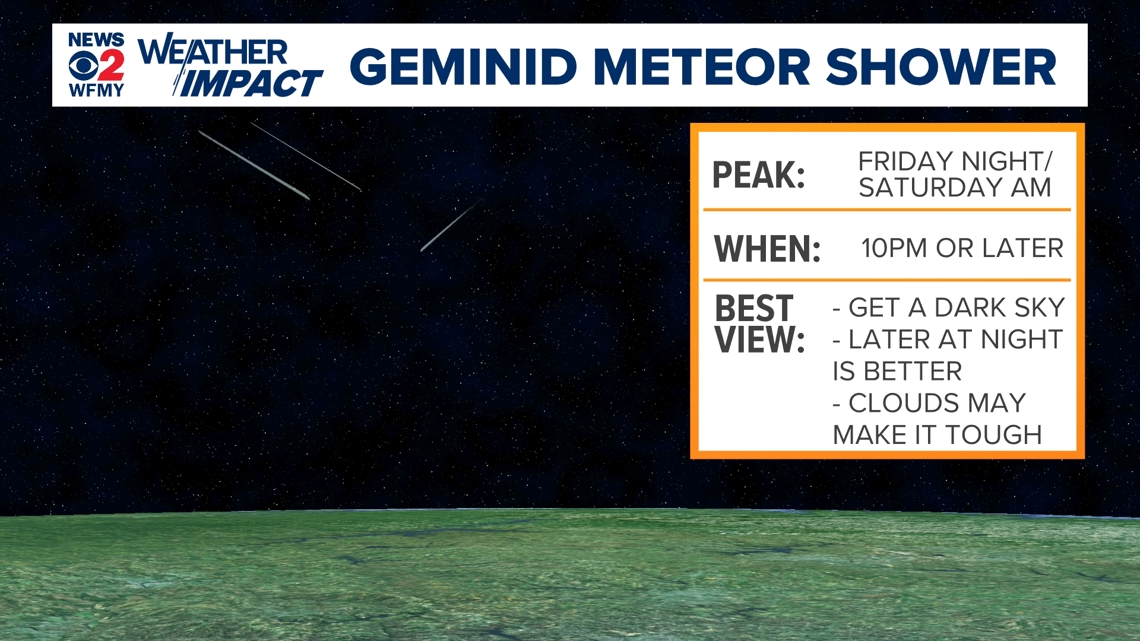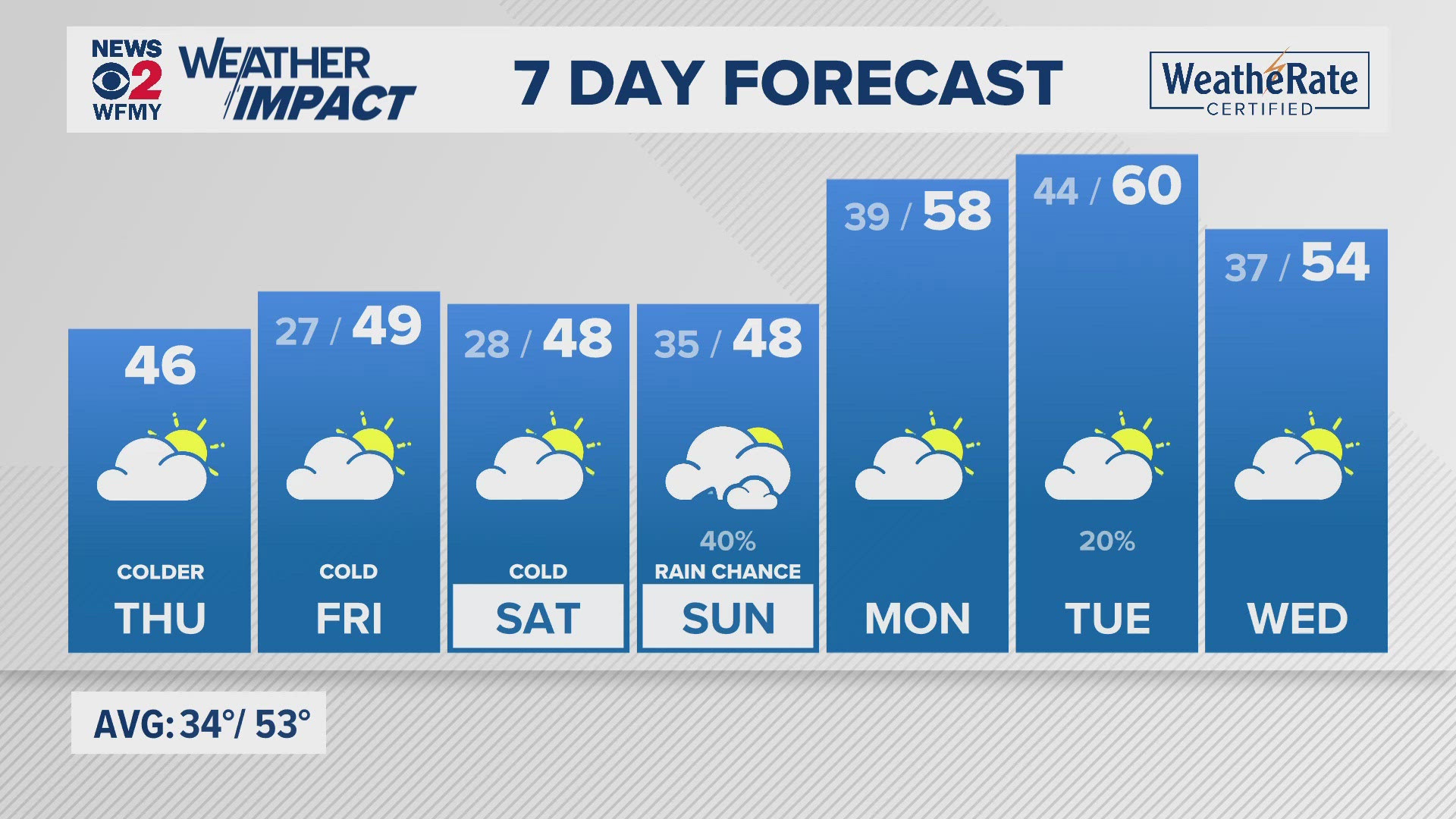GREENSBORO, N.C. — According to NASA, the Geminids meteor shower (which peaks during the middle of December each year) is considered one of the best and most reliable annual meteor showers! It's active between November 19th through December 24. During it's peak and in perfect conditions, up to 120 meteors can be seen per hour. For a full look at the forecast, head on over to this link.
Unlike most meteor showers, the Geminids don't originate from comets! They originate from an asteroid known as 3200 Phaethon. This asteroid takes about 1.4 years to orbit the sun. The Geminid Meteor Shower comes from the leftover bits of asteroid (3200 Phaethon) that come in contact with Earth's atmosphere every year, creating the beautiful streaks we see in the sky.
When's the best time to view it?


The Geminid meteor shower is best viewed during the late evening hours and predawn hours. According to NASA, the shower is considered one of the best opportunities for young viewers since the shower starts at around 9 or 10pm.
For best viewing, make sure you find an area away from city or street lights. Give your eyes time to adjust and make sure you look at the forecast! Skies will likely be partly cloudy, making it tougher to view at times.
The Geminids vs. the Full Moon
Another hurdle will be from the moon's brightness. Nearly a full moon is expected in the next few nights during the peak, so some of the meteors that are normally visible may be lost in the glow of the moon. So instead of the usual 120 an hour, you can expect to see about 15 or so. Be patient!
A better shot in 2025
If you miss them this year, or don't get to see as many as you would've like to -- you'll have a better chance next year in December of 2025. The full moon next year is expected to be earlier in the month on December 4th, which means the moon will likely not be as bright during the peak of the Geminids (mid-December).
Get any pictures or videos? Make sure to send them in to WFMY News 2. We may just feature them on-air or online!

